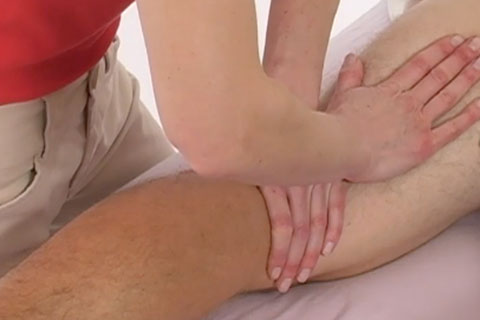Massage Post-Workout: A Quick Update
Massage after exercise, especially for athletes, is no new phenomenon. A Google search of “massage post exercise” brings up an ad from the retailer Kohl’s, selling at-home massagers as “exercise massagers.” Magazine articles entice readers with headlines about muscle recovery through massage; a Men’s Fitness article explains that just ten minutes of massage post-exercise can reduce sore muscles. But the science goes beyond this – Best and Crawford (2016) penned a short article, almost a meta-analysis, describing the advancements made in the world of sports regarding massage.
The authors elaborate on what is an effective massage post-workout, as well as why massage may help athletes so much. The authors describe the ideal massage for muscle recovery as taking place almost immediately after exercise, and lasting for a short session (between 5-12 minutes).
The authors note that massage may be an effective recovery tool considering it provides both physical and psychological benefits. Physical benefits include demargination of leucocytes, reduced muscle oedema, and a decrease in damaged muscle fibers. Psychological benefits can be an increase of relaxation and a decrease of stress biomarkers.
However, the authors note that there is still much left to study. The authors mention that many of the studies do not have a standardized physical protocol that participants engage in during the exercise portion of studies. In animal studies studying massage on muscle recovery, many studies have begun using standard protocols when the animals are exercising. In addition, variables such as amount of pressure during massage, frequency of massage, and athlete’s experience may affect massage’s effectiveness. That is, an athlete who has regularly exercised daily for a decade may not have as much pain and soreness post-exercise, and thus may have less effective results, than a new athlete who’s only begun training.
In addition, the benefit of the post-exercise massage seems to be most effective immediately following the intervention. Studies have shown that the best results occur about five to ten minutes following the massage, and begin to decline after only an hour has passed.
More research is underway about post-exercise massage, such as molecular changes in skeletal muscle post-massage or ideal frequency in massage following workouts. The authors suggest future research also look into a combination of recovery strategies (i.e. cold water immersion, compression) with massage.
While more research continues, the existing research seems to paint a clear picture for athletes – massage may not be the all-in-one solution, but it undoubtedly provides benefits for your sore muscles!
Reference
Best, T. M., & Crawford, S. K. (2016, September 18). Massage and postexercise recovery: The science is emerging. British Journal of Sports Medicine. doi:10.1136/bjsports-2016-096528




Follow Us!